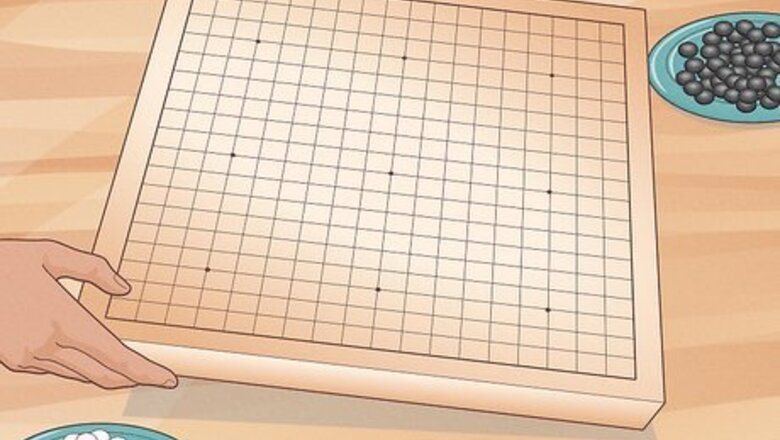
views
- Number of Players: 2
- Materials Needed: 19 x 19 Go game board, 360 Go game stones (181 black stones and 180 white stones)
- Objective: Control the most territory on the board & capture your opponent’s stones.
Setup

Set out the Go board and distribute the stones. Place a 19 x 19 Go game board in between the players. Choose who wants to play as black and who wants to play as white, then distribute the Go stones: 181 black stones to one player and 180 white stones to the other. Traditionally, the most experienced player uses black stones and goes first. For beginners, start learning the basics on a 9 x 9 board, then move up to a 13 x 13 board after a few games. Once you feel more comfortable with the strategy of the game, feel free to play on a standard 19 x 19 board.
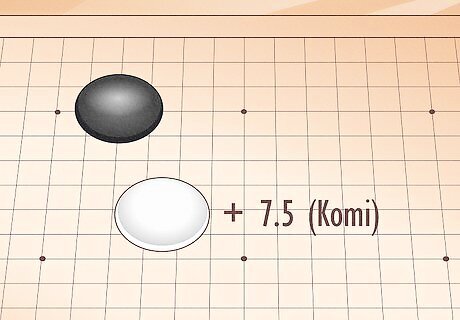
Agree on the number of compensation points for a traditional game. Since black has an advantage by playing first, white is compensated by taking komi (コミ)—additional points added to white’s score at the end of the game. Black’s first move is often considered equal to 5-7 points, but most tournaments use half points to avoid ties. Most Westerners follow Japanese and Korean rules, where standard komi is set at 6.5. Under Chinese, Ing, and AGA rules, standard komi is 7.5. The Korean term for komi is deom (덤), while the Chinese term is tiē mù (贴目).
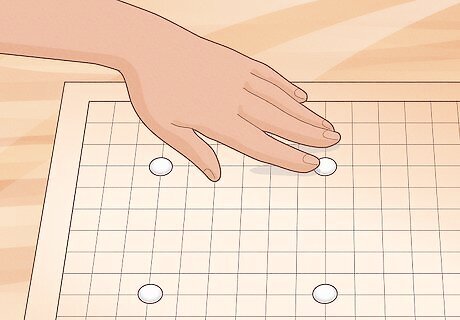
Place white stones on the “star points” of the board for handicap games. If one player is more experienced than the other, place a handicap on the game to offset the differences in strength and rank. Agree on the number of handicap stones before playing, then place them on the star points of the board (the dotted points on the 4th, 10th, and 16th lines). In handicap games, the stronger player uses white stones, while the weaker player uses black. Handicap stones serve as reference points to help the weaker player understand the strategy of the game. The number of handicap stones is equal to one stone per difference in rank. For example, the handicap between a 5 kyu and 4 dan player is 8 stones. If there is only a one-rank difference, both players often agree on a 0.5 point komi. Leave the board empty if both players are at the same level, or if komi is used in place of handicap stones. Give the weaker player 8 or more points to even out the playing field.
Strategy & Terminology
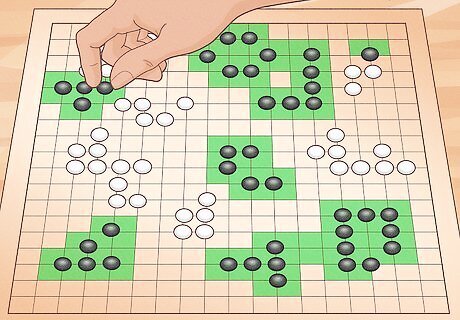
Try to control more area on the board than your opponent. The main objective of Go is to control more territory than your opponent by enclosing areas on the board with your stones. Territory includes empty intersections that are bordered by stones of the same color, as well as intersections that are surrounded by the same colored stones and the edges of the board. Each empty intersection within your territory is worth one point (or moku). To conceptualize the game, think of the board as an island where both players want to claim as much land as possible. If a player places a stone inside their own territory, they lose a point.
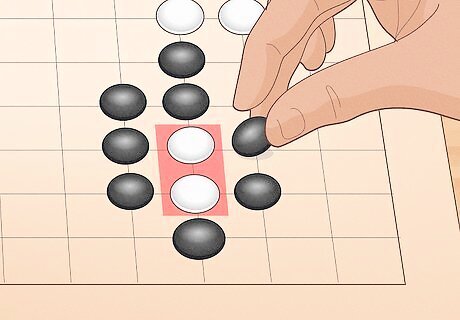
Surround your opponent’s stones to capture them as “prisoners.” Form strings around the board to shape and claim your territory, and surround your opponent. Once you fill all the adjacent intersections around your opponent’s stones, remove them from the board and keep them in a separate pile. These captured stones are called “prisoners,” and they are worth one point each, on top of the point you receive from each empty intersection. A string is a group of the same colored stones that are connected along grid lines vertically and horizontally—not diagonally. Once you form a string, it cannot be divided unless your partner surrounds it with their stones. A player cannot self-capture their stones by placing them inside their territory. If so, they lose one point.
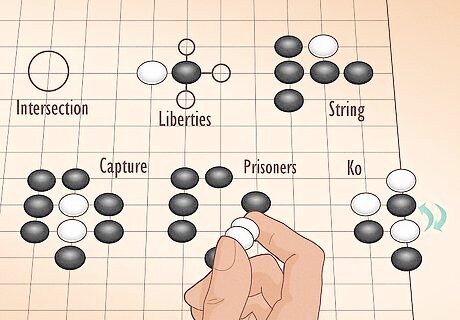
Familiarize yourself with the terminology of the game. Go over the key terms of the game to better understand the gameplay and strategy: Intersection: every crossing of lines on the board (including edges); there are 361 intersections on a 19 x 19 board Liberties: empty intersections that are horizontally and vertically adjacent to a stone String: a group of stones of the same color that are connected along board lines vertically and horizontally, forming a unit that cannot be divided Capture: when a string’s liberties are occupied by opponent markers, they’re captured Prisoners: the stones you capture from your opponent (from acquiring territory) Ko: a rule that removes the possibility of infinite recapture and capture; no recapture can occur until one play is made elsewhere on the board
Gameplay
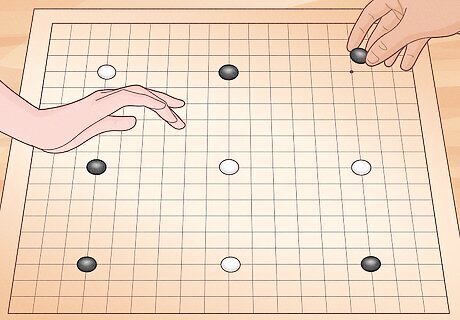
Take turns placing a stone on the intersection of the board. After choosing your stone color and agreeing on the number of compensation or handicap points, place a stone on an intersection of a grid line—not inside an empty square on the board. Alternate putting down stones with your opponent, with the goal of gaining more territory on the board. Intersections also include the T-shaped crossings at the edges of the board. Your stones will not move unless your opponent surrounds and captures them. This first move stakes out which side you want to claim. Traditionally, black places their stone in the upper right hand quadrant. In a handicap game, the weaker player goes after the stronger player puts their stones on the star points of the board.
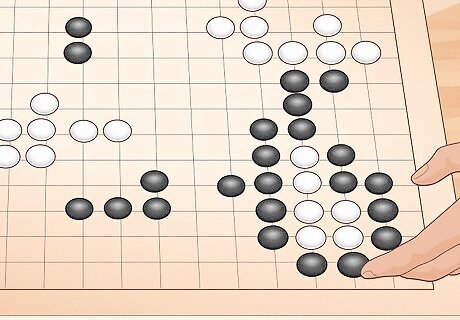
Decide on your strategy to win the most points. There are generally 2 options: claiming the most territory or invading your opponent's territory (to capture their stones and them into "prisoners"). Although gaining territory is usually considered the main goal, the points earned from captured stones can change the outcome of the game. If a player places a stone that removes the last liberty (empty intersection adjacent to the stone) from a connected group of the opponent's stones, then that group is dead and captured. The exception to the above rule is that you cannot capture a single stone that just captured one of your stones without playing elsewhere first. This is called the rule of ko ("ko" means "eternity" in Japanese), and it prevents the game from coming to a stalemate.
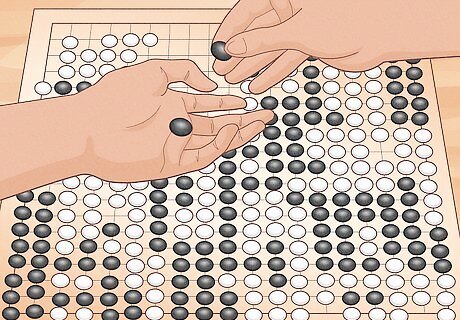
End the game when both players can't gain anymore territory. When you can’t increase your territory, capture anymore of your opponent’s stones, or reduce your opponent’s territory, give one stone to your opponent to “pass” your turn. Two consecutive passes end the game, then you and your opponent can start counting points. Either player can pass if they don’t see any benefit to making a move.
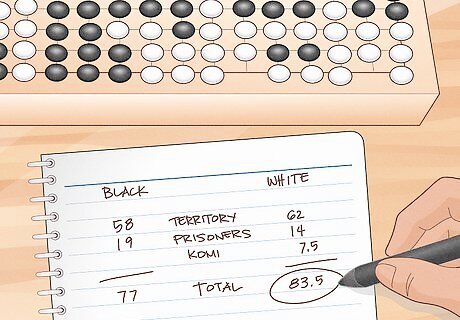
Win the game if you earn the most points. Score points by counting the number of intersections inside your territory and the stones you’ve collected from your opponent (“prisoners”). Each intersection is worth one point, and each collected stone is worth an additional point. If you agreed to use komi at the beginning of the game, add the additional points to calculate your final score.
















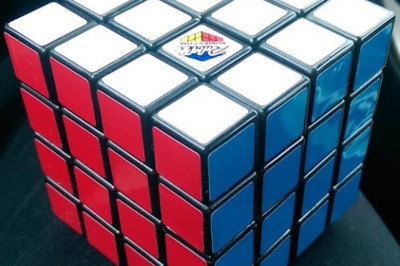



Comments
0 comment